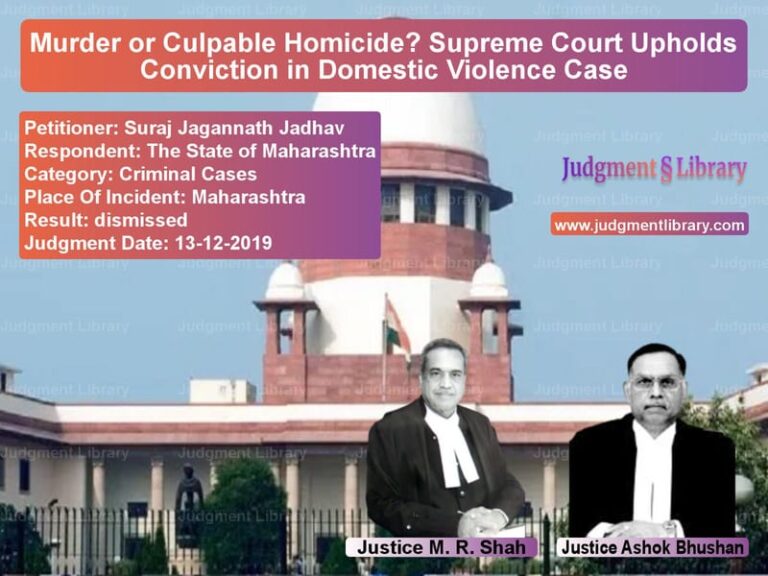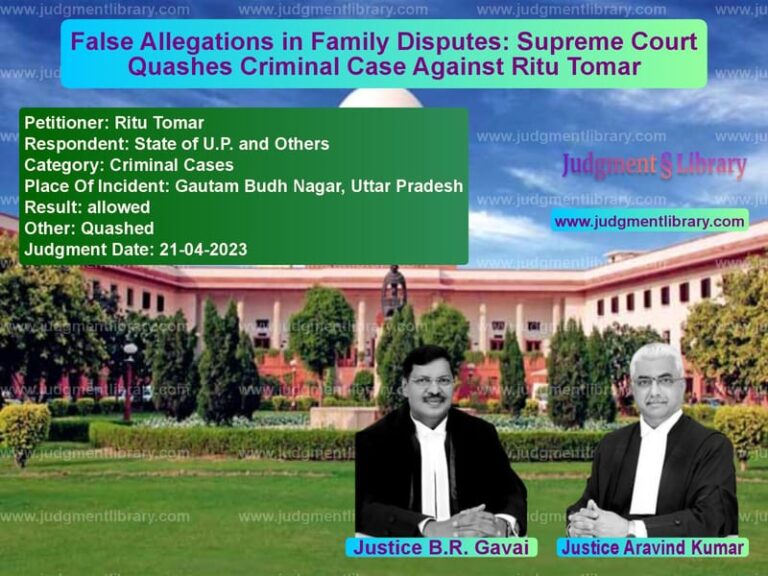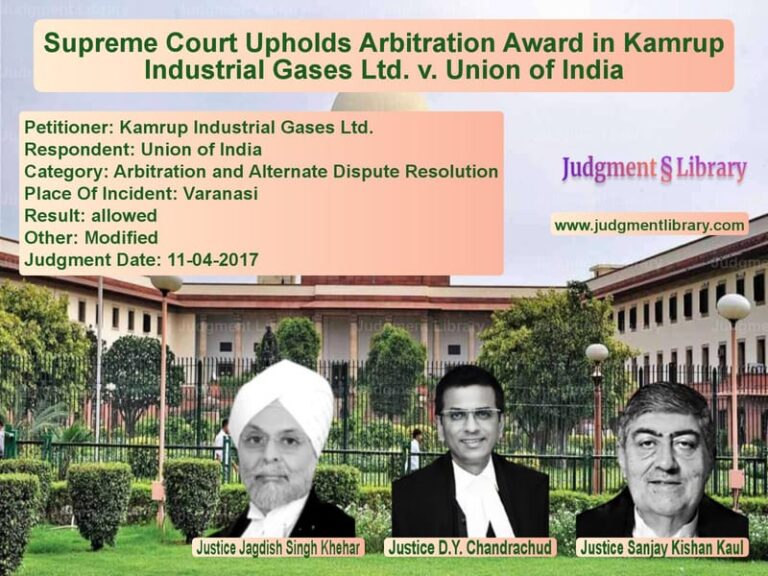Supreme Court Ruling on Unlawful Assembly and Criminal Liability in Najabhai Desurbhai Wagh v. Valerabhai Deganbhai Vagh & Ors.
Introduction
The case of Najabhai Desurbhai Wagh v. Valerabhai Deganbhai Vagh & Ors. concerns criminal liability under Section 302 read with Section 149 of the Indian Penal Code (IPC). The Supreme Court examined whether an unlawful assembly existed and if its members shared a common object to commit murder.
The key legal issue was whether the accused could be held liable for murder despite not inflicting the fatal injuries themselves, based on their participation in an unlawful assembly under Section 149 IPC. The case also delved into the distinction between common intention (Section 34 IPC) and common object (Section 149 IPC).
Background of the Case
The incident occurred on March 24, 1998, when an altercation between two groups led to a violent clash. The dispute arose when Accused No.1 allegedly damaged an electric pole while driving a tractor near the complainant’s house. When confronted by the complainant’s family, he threatened to return with reinforcements.
Later that evening, Accused Nos.1 to 14 arrived at the complainant’s house armed with axes, iron pipes, spears, and other weapons. They launched a brutal attack, causing serious injuries to multiple individuals. The complainant’s brother, Unadbhai Desurbhai, suffered fatal head injuries and died two days later.
Trial Court’s Verdict
The Second Fast Track Judge, Amreli, found all 14 accused guilty under:
- Section 302 read with Section 149 IPC – Sentencing them to life imprisonment and a fine.
- Sections 324 and 325 read with Section 149 IPC – Sentencing them to six months of rigorous imprisonment.
- The court also ordered some accused to pay compensation to the deceased’s heirs.
High Court’s Judgment
On appeal, the Gujarat High Court partially overturned the conviction:
- Acquitted Accused Nos.1 and 2 under Section 302 read with Section 149 IPC.
- Maintained their conviction under Sections 324 and 325 IPC.
- Acquitted Accused Nos.3 to 9 and 11 to 14 of all charges.
- Convicted Accused No.10 under Section 302 IPC simpliciter.
Arguments by the Petitioner (Complainant)
- The High Court wrongly acquitted most of the accused under Section 302 IPC.
- The attack was premeditated, proving common intent.
- The presence of weapons and the nature of the attack showed an unlawful assembly.
- The accused should be convicted under Section 302 read with Section 149 IPC as they participated in the attack.
Arguments by the Respondents (Accused)
- The accused were not part of an unlawful assembly with the common object of murder.
- The incident was a mutual fight, and both sides suffered injuries.
- The prosecution failed to prove that all accused shared a common intent to kill.
- A cross-case was filed against the complainant’s party, showing shared aggression.
Supreme Court’s Judgment
The Supreme Court analyzed whether the accused had a common object to commit murder under Section 149 IPC. The Court ruled that:
- The accused did form an unlawful assembly and attacked the complainant’s party.
- However, there was no pre-planned intent to commit murder.
- Mere presence in an unlawful assembly does not automatically result in a murder conviction.
The Court modified the High Court’s order:
- Acquitted Accused Nos.1 to 9 and 11 to 14 of murder charges.
- Converted their conviction to Section 326 IPC (causing grievous hurt with dangerous weapons).
- Limited their sentence to time already served (7.5 years).
Legal Principles Reaffirmed
- Unlawful assembly does not automatically imply a common intent to kill.
- Use of weapons alone does not justify a murder conviction.
- Criminal liability should be determined based on individual participation.
- Mutual fights do not always result in equal culpability.
Key Takeaways
- Criminal liability under Section 149 IPC requires a proven common object.
- Weapons alone do not establish intent to kill.
- Sentences must be proportionate to each accused’s role.
Impact of the Judgment
The ruling will influence similar criminal cases:
- Encouraging judicial consistency: Lower courts must align with the Supreme Court’s view on common intention.
- Strengthening prosecution of violent crimes: Criminals cannot escape liability by arguing they did not physically harm the victim.
- Guiding sentencing decisions: Courts will ensure proportionality in punishments.
Conclusion
The Supreme Court’s judgment in Najabhai Desurbhai Wagh v. Valerabhai Deganbhai Vagh & Ors. establishes that an unlawful assembly must have a common object to justify a conviction under Section 302 read with Section 149 IPC. The ruling ensures that courts differentiate between those actively involved in violent crimes and those with lesser roles.
Don’t miss out on the full details! Download the complete judgment in PDF format below and gain valuable insights instantly!
Download Judgment: Najabhai Desurbhai W vs Valerabhai Deganbhai Supreme Court of India Judgment Dated 01-02-2017.pdf
Direct Downlaod Judgment: Direct downlaod this Judgment
See all petitions in Murder Cases
See all petitions in Attempt to Murder Cases
See all petitions in Bail and Anticipatory Bail
See all petitions in Judgment by S. A. Bobde
See all petitions in Judgment by L. Nageswara Rao
See all petitions in partially allowed
See all petitions in Modified
See all petitions in supreme court of India judgments February 2017
See all petitions in 2017 judgments
See all posts in Criminal Cases Category
See all allowed petitions in Criminal Cases Category
See all Dismissed petitions in Criminal Cases Category
See all partially allowed petitions in Criminal Cases Category







